Top Five Ways to Drive Mobile Game Retention
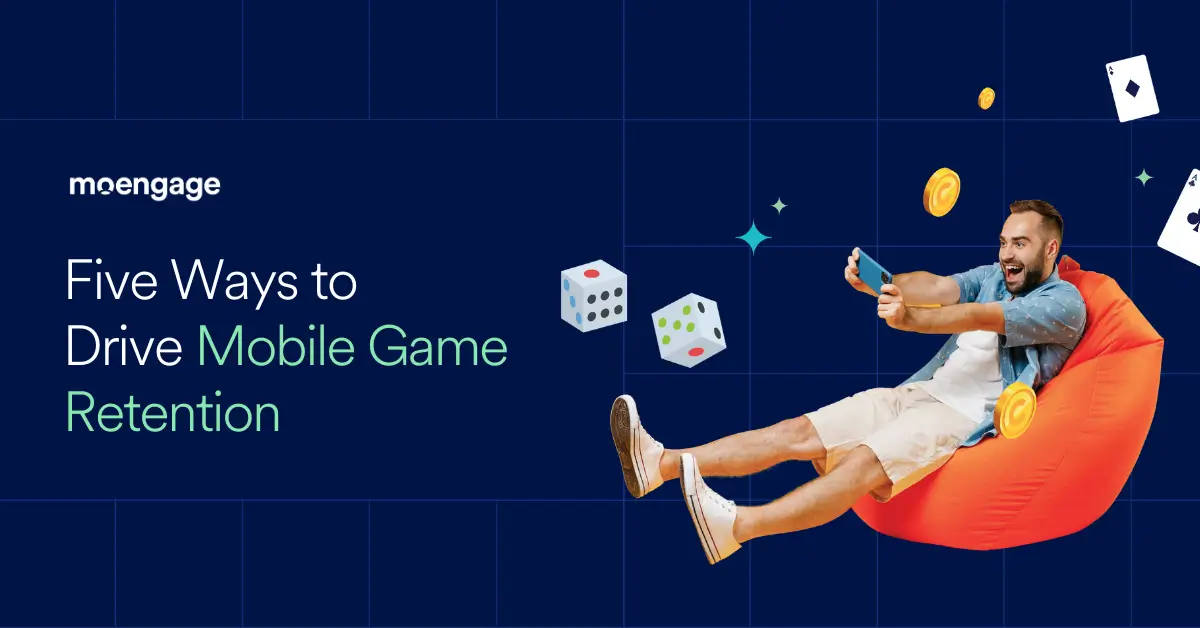
Reading Time: 9 minutes
The Mobile Gaming Odyssey
The earliest introduction of mobile gaming for some of us was the game Snake, back when Nokia feature phones used to be all the craze! The now iconic game on the Nokia 6610, when introduced back in 1997 and entered the public consciousness, was the turning point for mobile gaming as an industry. While it had the most straightforward UI in place, the app usage was through the roof!
To say that the industry has come a long way since then is a colossal understatement! We have anything and everything available right at the click of a button, be it groceries, travel, financial services, or your favorite fashion retailer. So it’s logical that the same would also be the case with gaming.
With the surging increase of smartphone adoption in India along with the availability of 5G internet services at scale, gaming on mobile devices is incredibly easy and, therefore, quite common nowadays!
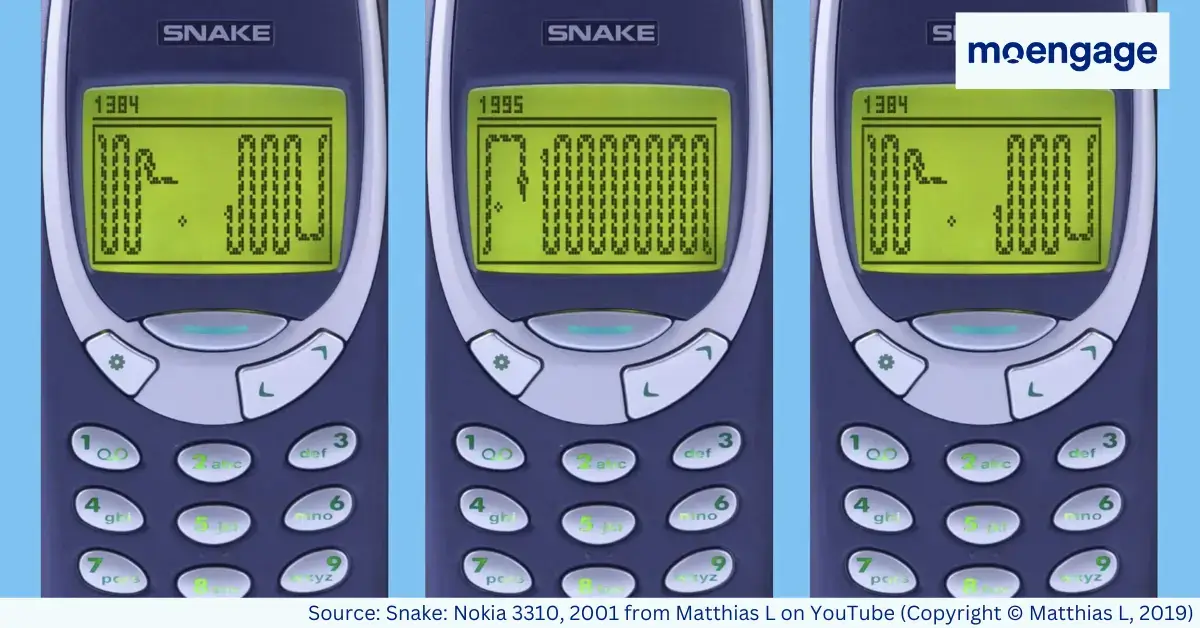
Want to access findings from 100+ Mobile Gaming brands to stay ahead of the curve in 2023? Download our report now!
The “Acquiring New Users” Business
Persuading players to install your brand’s mobile games is all about catching their attention at the right time via the proper channels and messaging.
Whether it’s through different interactive ad formats such as native, video, interstitial, and playable ads or whether it’s simply through content in the form of blogs- the end game is the same. Onboarding more players to the mix.
But it’s not simply about the volume. It’s also about acquiring players who aren’t going to stop playing your game after giving it a go just once. The idea is to build a repository of engaged players.
And the key here is having an effective retention strategy.
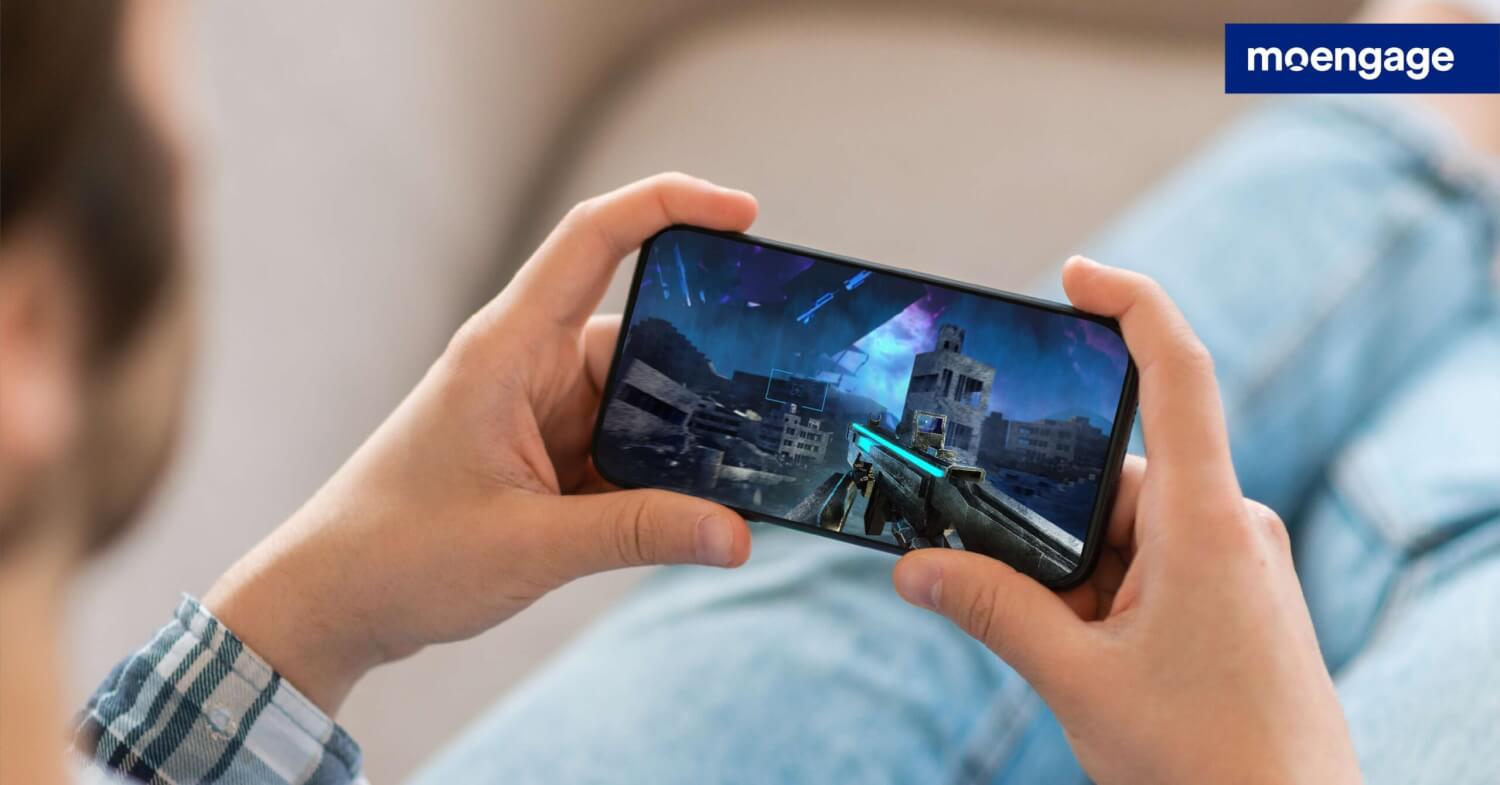
The Mobile Game Player’s Journey
Before diving into the ins and outs of player retention, we must look at what a standard mobile game player’s journey looks like wrt retention:
- Day 1 retention is all about the first impression. If a player continues to play after the first day of download, they are probably happy with the tutorial, the onboarding process, the game’s content, and user interface. These users are likely to investigate more features later.
- Day 7 retention tells us how many players actually like the mobile game. This benchmark is crucial for determining how many users have invested the bare minimum of time necessary to become acquainted with the fundamental elements of the game.
- Day 30 retention shows a group of loyal users who have continued launching the mobile game after one month. These are arguably the most rewarding users. These users have the greatest chance of turning into high-frequency players that make purchases. They are very likely to become engrossed in the game and stick with it for a very long period.
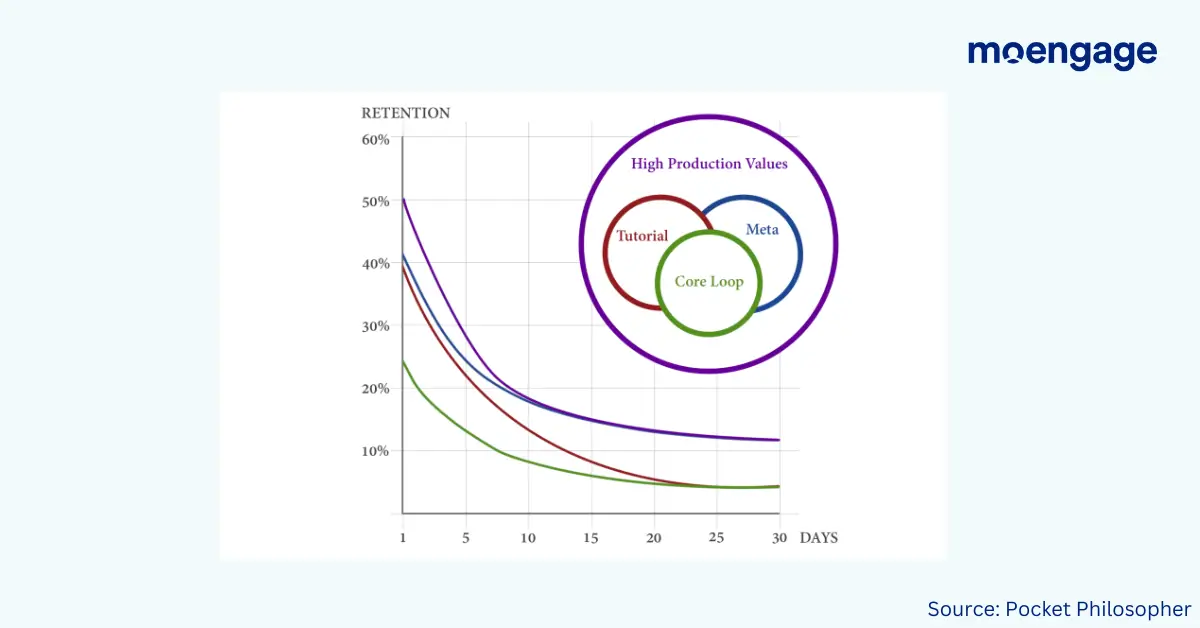
The Way to High User Retention
Cracking the retention for Day 1, Day 7, and Day 30 journey stages is where building effective user retention strategies comes into the picture. Having a solid mobile game retention strategy can aid you in achieving massive success.
But the concept of optimizing user retention rates in itself is somewhat of a challenge.
This is why Customer Engagement Platforms, or CEPs, are becoming increasingly popular among mobile game publishers. Such platforms help brands across industries gain a competitive edge and also help drive user engagement.
Garnering a community of loyal users that repeatedly use your brand’s mobile game is how you make sure your gaming brand is going to come out on top and optimize user retention.
The biggest games in the industry continue to grow year-on-year through strategies that you, too, can deploy for your gaming brand using these five principles:
A) Know and Target Your Specific Customer Segments
The mobile gaming industry is expected to reach over USD 214.6 billion by 2028. Due to its massive size, while the opportunities are endless, so are the ways to capitalize on it. One of those being specific customer segments.
In the context of gaming, segmentation can take one of two forms. Gaming apps can either segment based on user engagement or based on monetization. Both play an equally important role; hence, driving a balance between them is the best way to go about it.
A Glimpse at Ways To Segment Your Game’s Target Audience
Some of the ways to segment the target market for gaming include:
- Game genres (Puzzles, RPG, Shooters, etc.)
- Age Groups
- Spending Habits
- Monetization (Free-to-play, play-to-earn, and paid)
- Single-player vs. multiplayer
Among many others!
Just ensure that the segments you identify cover the entire addressable market you are trying to capture and engage with.
The easiest way to precisely segment your target audience is by using a Customer Engagement Platform (CEP).
These platforms offer sophisticated analytical models that assist brands in comprehending user behavior, analyzing how customers progress along the funnel, and determining what motivates them to stick around or drop off.
All in all, CEPs can help analyze the target market for your mobile gaming apps and determine untapped opportunities you may not have considered.
Check out how SkillClash, an Indian real money gaming app, achieved a 30% uplift in revenue using MoEngage’s Segmentation capabilities!
B) Promote a Community Culture
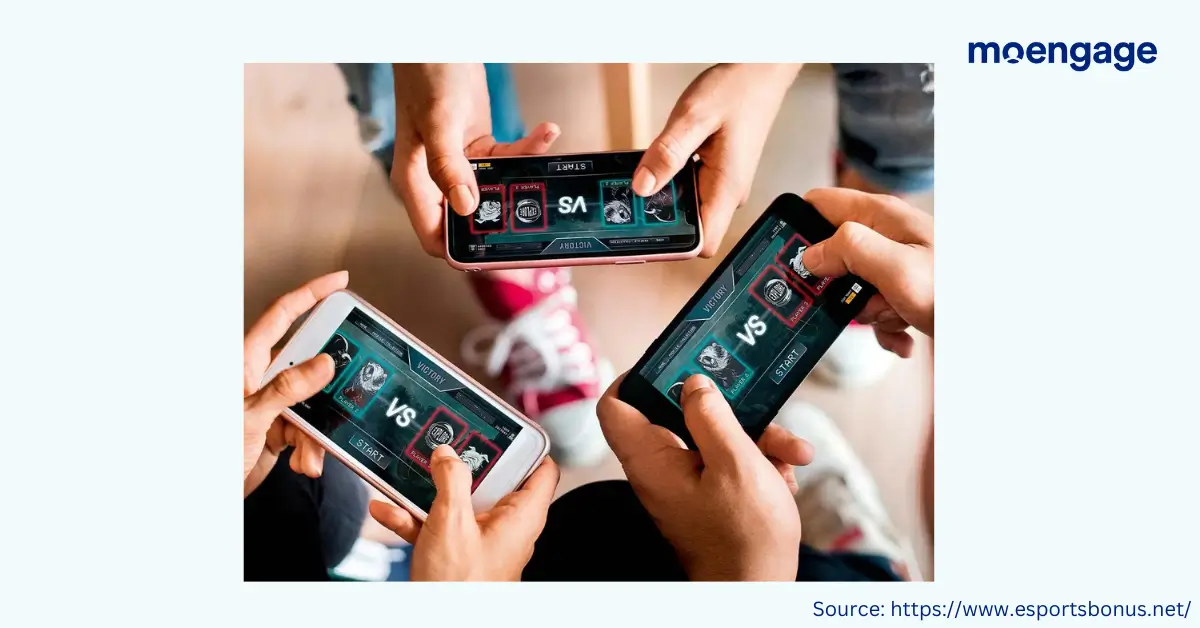
In an industry where there is evidently fierce competition, promoting a community culture for your app or game is essential to building a loyal customer base.
The primary advantage of gaming communities is that they offer players the opportunity to socialize and interact with one another.
These settings have the potential to develop into substantial social and support networks, which were particularly helpful for young people who were experiencing isolation during the Covid-19 pandemic.
The sense of belonging, combined with the game’s offerings, can really move needles when it comes to the app’s retention rates.
Examples of Some of The Most Popular Community-based Mobile Games
A study by Achievement and Friends revealed that smartphone users who play games with their friends are twice as likely to launch a game as solo players.
The biggest mobile games in the world, like PUBG Mobile, Arena of Valor, Fortnite, and Call of Duty: Mobile, are all multiplayer experiences that have been around for years and have strong brand loyalty and loyal users.
Genshin Impact, which generated $4 billion in revenue in 2022, is a single-player game, but it too has co-operative (co-op) features and multiplayer game modes and events.
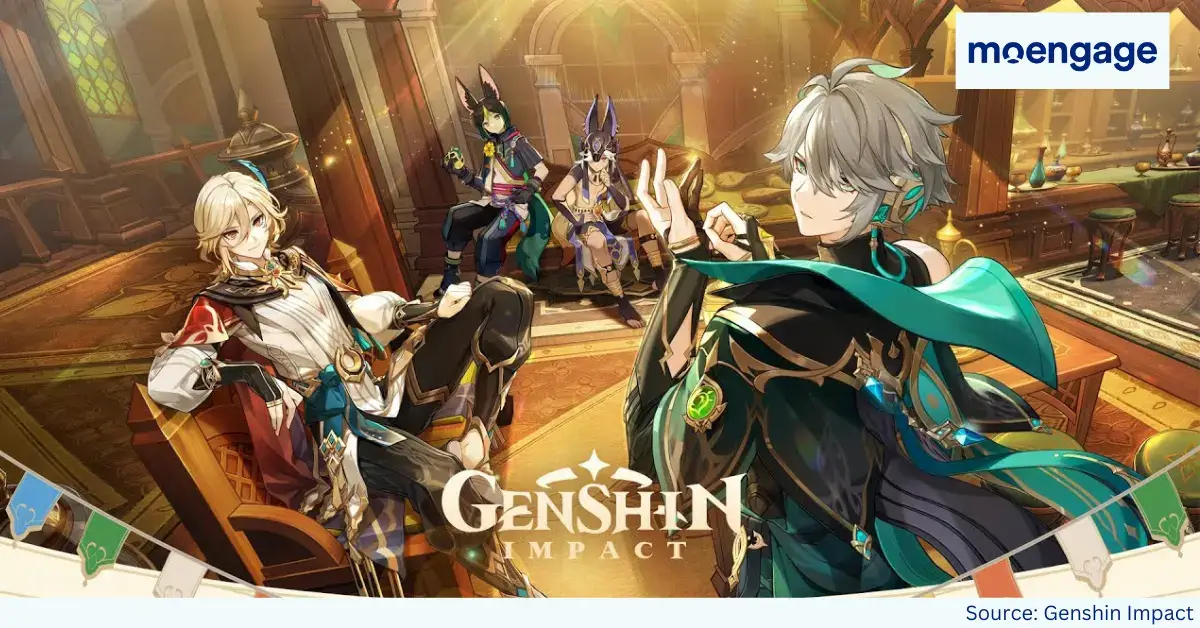
Promoting the culture of gaming communities for your brand not only helps in enhancing players’ experiences and fostering friendships but also promotes a positive gaming culture and appreciation for the brand.
C) Player Experiences That Are Personalized To A T
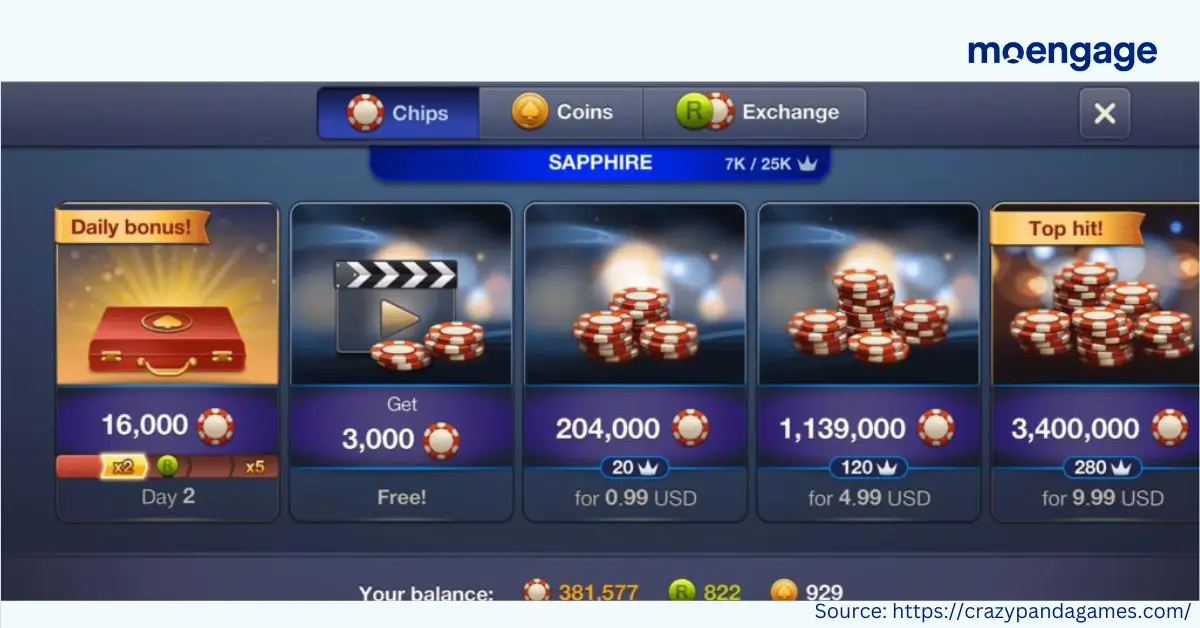
Considering there is often a thin line between interest and boredom, keeping players interested for extended periods of time is a crucial indicator of a mobile game’s success or failure.
Each game appeals to specific player groups, some of which can be quite specialized. By tailoring vital in-game features to players’ choices, personalization lets a game appeal to a much broader audience.
So, needless to say, offering personalized communication and user interface based on a player’s in-game interactions can greatly improve retention rates.
Personalize Using Push
Push as a channel is one such way where the scope for personalization is wide and great.
It would be foolish to believe that push notifications are unnecessary for gaming apps on the hypothesis that players are likely to open the app every day.
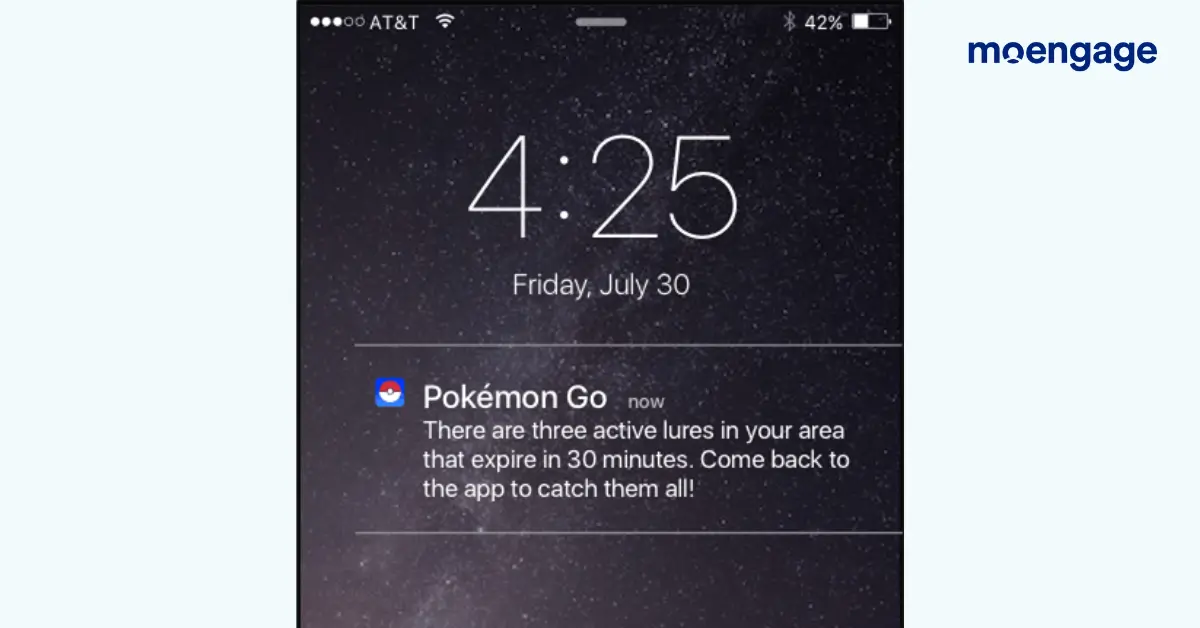
Every mobile app, whether it is a gaming app or not, needs push notifications at some point in the customer lifecycle, from user acquisition and onboarding to engagement and retention. These are instrumental in preventing users from slipping through the cracks.
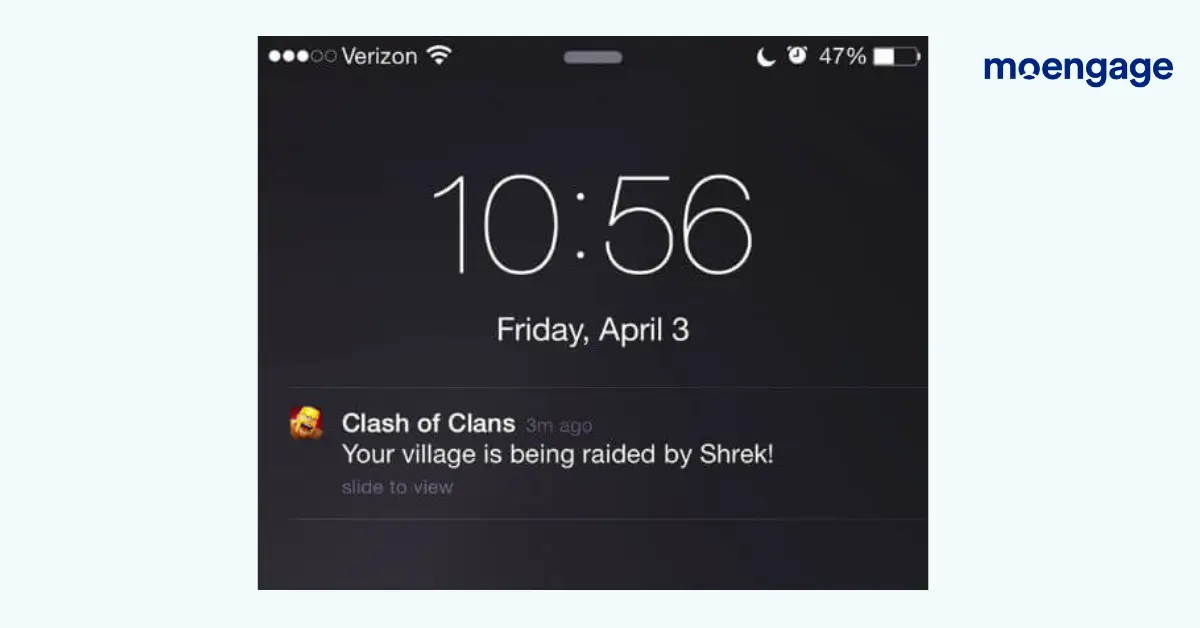
Push notifications have the ability to help mobile gaming apps achieve this on a massive scale that games on PCs and consoles cannot.
Types of Push Notifications For Mobile Game Players
You can send your players a torrent of custom notifications that remind them of challenges or missions they have been working on and much more!
Here are some examples of notifications that can enhance engagement:
- Login rewards
- Patch updates
- Event announcements
- Progress updates
By putting yourself in your audience’s shoes, you should be able to determine what drives motivation to continue playing a game, which will help you identify personalization opportunities to drive player loyalty.
An optimized customer experience (throughout the buyer journey, including the onboarding experience) requires more than just theoretical understanding. It involves well-defined processes that need to be integrated into your game development journey.
D) Boost IAA and IAP Revenues by Effectively Using the In-App Channel
Managing transactions, making in-app purchases, and seeking support within your game must be absolutely seamless. Microtransactions also need to feel rewarding and not too intrusive to the core gameplay, which can easily dissuade players from investing in your game.
If not, this can adversely affect your mobile gaming brand’s bottom line. How, you ask?
The two primary revenue sources for mobile game publishers are IAA (in-app advertising) and IAP (in-app purchases). Add to that the fact that people around the globe spend one-third of their waking time on mobile applications, IAA and IAP are extremely vital factors in driving revenue for mobile apps.
So utilizing the in-app channel effectively is a no-brainer.
While third-party communication channels through your website’s live chat or social media platforms are necessary to supplement player engagement, the in-app channel should be the go-to destination for your players’ needs.
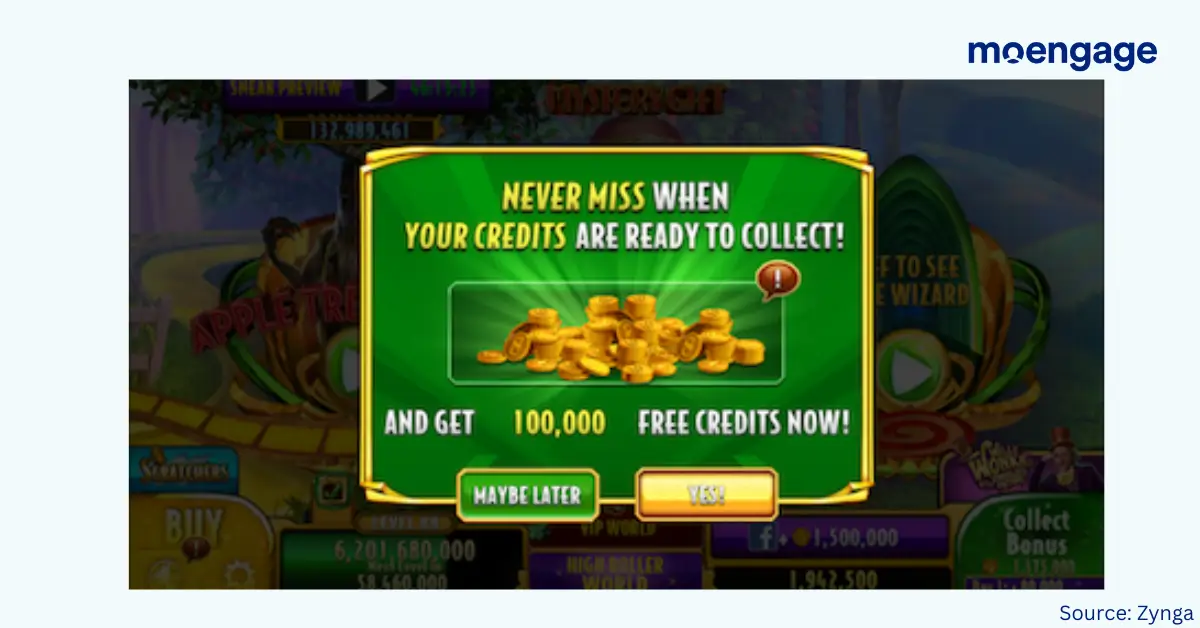
Additionally, players are more likely to engage with your game and make purchases if you communicate with them in-game.
Players should not need to access third-party websites to redeem special rewards or get updates about a game’s future or existing content.
An effective way to remind valuable players to experiment with your in-app features is through beta testing or trial features. Surveys with an added incentive of in-game rewards can also help you know your customers’ needs and cater to them accordingly. And ultimately, help improve user retention.
Want to find out how Among Us grew its user base by 1600% in 8 Months? Click here to read more!
E) Incorporate Artificial Intelligence Platforms to Optimize Campaigns
If all of the above-mentioned reasons aren’t enough proof as to why intelligent platforms like CEPs are instrumental in improving retention rates, here’s something else to consider- the power of AI!
AI-driven insights can help you establish clear goals for your game. Let me explain.
CEPs that have AI incorporated into the mix can help predict customer responses and open up new sales opportunities that you may have missed. By deploying these intelligent platforms, you can increase user retention and reduce the chance of “blind spots” that could lead to missed revenue opportunities.
AI’s role in microtransactions & more
While it’s no surprise that AI-based platforms can help marketers figure out what is the correct message variant and the right time to send it to each of the players, the new-gen technology can also aid in setting prices for in-game items and other microtransactions.
It takes thorough research to identify price points at which an optimal part of your player base will interact with your game. Artificial intelligence can help streamline this process, especially if you publish a free-to-play game with microtransactions.
Conclusion
The mobile gaming industry is more competitive than ever, and it is important to build customer retention strategies to help you sustain yourself long-term.
While plenty of games focus on generating new players, games that manage to hold the attention of their player base for years are succeeding the most.
Customer loyalty can be difficult to achieve, but it is the most reliable way of building a successful game, in addition to quality experiences that your audience wants to engage with.
The use of smart marketing strategies and CEPs can help you retain users, bolster your mobile gaming business and help create successful games with thriving, loyal communities.
Related Reads –Here are some reads that are sure to help drive higher customer retention rates for your gaming brand:
|














